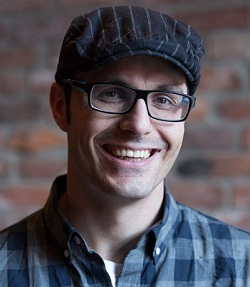Lost in Space franchise is again in the news as its season two shooting is underway. Recently the team has announced that they are conducting social media engagement challenge where the winner will win a chance to visit the set and get a glimpse of behind the scenes of Lost in Space Season 2.

Lost in Space, an American science fiction Netflix television series, set 30 years in future where colonisation space is the reality. The Robinson family was among the chosen one to switch to a new life on a new planet. But as soon as their spaceship crash and they land on an alien planet, their struggle and survival story against against alien odds, begins.
In the creation of the 30 years ahead future aura including robots, alien land and spaceships, the series has included undoubtedly a lot of VFX and special effects which has glued the audience to the content extensively.

Image Engine was one of the vendors who was tasked with the VFX of the five episodes of Lost in Space. Image Engine visual effects supervisor Joao Sita mentioned to AnimationXpress, “We completed a total of 271 shots across five episodes with 11 of those shots being used for the teaser trailer.”Besides that, Cinesite studio was the other vendor of the series, who delivered over 160 VFX shots for four episodes.
As the post production of the film started started in April 2017, the plate turned over and Image Engine made their final delivery in February 2018. So it took about 10 months for them to accomplish their project. Not only that, Image Engine was also involved in the prior discussions with Netflix as early as September 2016 to get all the bidding and breakdowns in place as Sita expressed in conversation with us.
Plunging in the technicalities, Sita poured colour behind the secret on how they enhanced the quality of the content for season one. To maintain the 4K quality in the content, the series was shot in 7K and then downres’d to 4K in post-production since it is for online video publishing. Sita emphasised that “this was really unique as far as trying to preserve the highest quality possible in the material acquired.”
The way Netflix managed the show across multiple vendors was also very specific. For example, Image Engine worked on five different episodes and for each episode, the scope of the work would hold a different meaning as there was not much overlapping in disciplines. It results-“greater exploration and more efficient approach at the same time, to each episode,” he added.
Usually, there is either a third party vendor or the client has an in-house team fully dedicated to pre-visualisation of the content. But the highlighting point was that “the client relied on Image engine for most of the pre-visualisation of the work for the final robot battle,” he said. Undoubtedly, this was an incredible opportunity for the studio to not only assist the client in developing the sequence, but also engaging their team in the initial process.

Since Image Engine was involved in the earlier production, it came as a boon for them, considering the season one climax episode 10, they were in charge of the pre-visualisation and also in drafting out ideas for possible action shots, angles and pace.
“While the script was in development, we could incorporate new elements and maintain the same dynamic energy building up to a climax that was yet to be established,” he added.
In the season finale the Robot was involved in quite a big battle with another of its kind. But since, Image Engine was involved from the very beginning of the production, many of their early ideas and pitches came to fruition in the final shots.

Image Engine emphasised that the final fight sequence needed specific asset development support including all the damage states, different powers and simulations, (which includes hot hand, blast effect, nebula spill ) as well as a dramatic performance, where humanoid communicates with the family.
On asking any particular memories considering Image Engine’s Lost in Space experience, Sita shared, “The whole process felt very unique. Both sides (Cinesite studios and Image Engine) were pitching in ideas and everyone was open to the different ways we could give the robot a fresh look and feel. It was a dynamic process driven primarily by the story points. The fact that the series was shot in British Columbia (near the Image Engine studio) and we could get the crew on-set was another highlight of the show. And of course, our Emmy nomination was a very special and it is an accomplishment for us all.”
Lost in Space has been high on conversions among viewers, especially the series having amazing CGI which includes the interesting spaceship, spectacular scenery and the realistic humanoid robots.
The series’ hopeful cliff-hanger conclusion specify that sooner there will be a Lost in Space Season 2 as well, for which, the shooting is underway. Though Netflix is yet to announce the release date of season two yet, we can assume it will be again an April release and it will be quite VFX heavy, like the season one.

